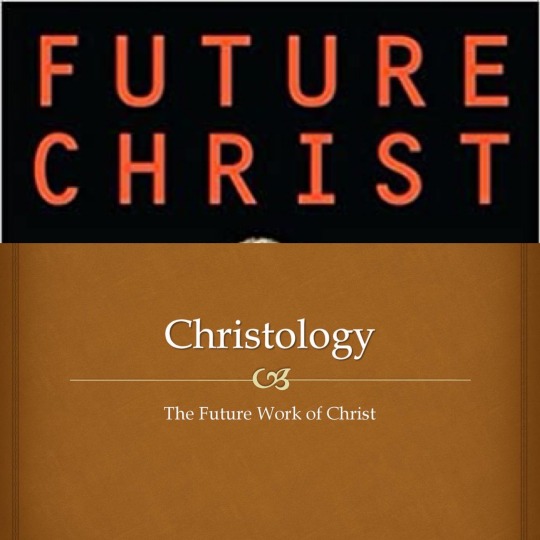#Daniel12v1
Text

Academic Bias on the Web
By Author Eli Kittim
——-
I recently submitted a version of the following post in the *Group for New Testament Studies* (on Facebook) but, regrettably, the administrators did not approve it. Yet, given the validity of the Greek exegesis, it certainly deserves serious academic consideration. This is indicative of academic discrimination based on their own personal biases.
——-
2 Principles of Biblical Hermeneutics Should Guide our Investigation
Two principles of Biblical hermeneutics should be considered foundational. Exegetes must interpret the implicit by the explicit and the narrative by the didactic. In practical terms, the *NT epistles* and other more *explicit* and *didactic* portions of Scripture must clarify the implicit meaning and significance of the gospel literature, which, by the way, is not biographical but *theological* in nature, as Bultmann, Crossan, Lüdemann, Licona, Crossley, Robert L. Thomas and F. David Farnell, Dennis MacDonald, Robert Gundry, and Thomas L. Brodie, among others, have clearly demonstrated!
——-
This *Greek exegesis,* translated straight from the text itself, challenges the classical Christian interpretation, which is primarily founded upon historical-fiction narratives. This *Greek exegesis* not only complements the Jewish messianic expectations but it also fits perfectly with the end-time messianic death & resurrection themes alluded to in the Old Testament (see e.g. Isa. 2.19; Dan. 12.1-2)! In short, both the Hebrew and Christian Scriptures seem to say the exact same thing, namely, that the Messiah will appear “once for all at the end of the age” (Heb. 9.26b)!
——-
*The Future Christ* Greek Exegesis
According to the New Testament’s explicit and didactic portions of Scripture, Christ is *born* when time reaches its fullness or completion, expressed in the apocalyptic phrase τὸ πλήρωμα τοῦ χρόνου:
ὅτε δὲ ἦλθεν τὸ πλήρωμα τοῦ χρόνου,
ἐξαπέστειλεν ὁ θεὸς τὸν υἱὸν αὐτοῦ,
γενόμενον ἐκ γυναικός (Gal. 4.4).
According to the principle of expositional constancy, the chronological time period known as “the fullness of time” (τὸ πλήρωμα τοῦ χρόνου) in Gal. 4.4 is defined in Eph. 1.9-10 as the consummation of the ages (cf. Heb. 9.26b NASB):
γνωρίσας ἡμῖν τὸ μυστήριον τοῦ θελήματος
αὐτοῦ, κατὰ τὴν εὐδοκίαν αὐτοῦ ἣν
προέθετο ἐν αὐτῷ εἰς οἰκονομίαν τοῦ
πληρώματος τῶν καιρῶν,
ἀνακεφαλαιώσασθαι τὰ πάντα ἐν τῷ
Χριστῷ, τὰ ἐπὶ τοῖς οὐρανοῖς καὶ τὰ ἐπὶ τῆς
γῆς· ἐν αὐτῷ.
The fullness of time (τοῦ πληρώματος τῶν καιρῶν) in Ephesians refers to the *summing up* (ανακεφαλαιώσασθαι) of all things in Christ, things in heaven and things on earth! Thus, according to Gal. 4.4, Christ is born during the consummation of the ages (i.e. in the end-times; cf. Lk 17.30; Heb. 1.2; Rev. 12.5; 19.10d; 22.7, 10, 18, 19)!
The initial appearance of Christ is also rendered as taking place “at the final point of time” in 1 Pet. 1.20 NJB:
προεγνωσμένου μὲν πρὸ καταβολῆς
κόσμου, φανερωθέντος δὲ ἐπ’ ἐσχάτου τῶν
χρόνων.
Further textual confirmation comes by way of Heb. 9.26b, which reads:
νυνὶ δὲ ἅπαξ ἐπὶ συντελείᾳ τῶν αἰώνων εἰς
ἀθέτησιν ἁμαρτίας διὰ τῆς θυσίας αὐτοῦ
πεφανέρωται.
NRSV translation:
“he has appeared once for all at the end of
the age to remove sin by the sacrifice of
himself.”
A historical-grammatical study of the phrase ἐπὶ συντελείᾳ τῶν αἰώνων demonstrates that it refers to “the end of the age” (i.e. the end of the world; cf. Mt. 13.39-40, 49; 24.3; 28.20; Dan. 12.4 LXX; see also G.W.H. Lampe [ed.], “A Patristic Greek Lexicon” [Oxford: Oxford U, 1961], p. 1340).
——-
Conclusion
The assumed historicity of Jesus needs to be revisited, given that his only visitation is set to occur at the end of the age! Accordingly, this exegesis argues that the epistles are the primary keys to unlocking the future timeline of Christ’s only visitation. To demonstrate the validity of this argument, we must get back to NT Greek in order to focus on questions of authorial intent. To simply dismiss, ignore, or disregard this exegesis is tantamount to academic dishonesty!
Most people, in fact, will not take the trouble in
finding out the truth, but are much more inclined
to accept the first story they hear.
(Thucydides, History of the Peloponnesian War)
——-
Response
I received the following Facebook notification a week or so after submitting a version of the aforementioned post in the Group for New Testament studies:
Your pending post was declined from
Group for New Testament Studies by an
admin. See their feedback.
When I clicked on it, the reason given for the rejection of the post was as follows:
Group Rules that were violated
2 Keep it Scholarly:
NT, early Christianity, & discussion of the
field ok. Posts that assume/attempt to
impose a Christian perspective will not be
approved & commenting in this way will
result in a warning & then removal.
So, I wrote back to them . . .
Open letter
——-
I have sent a copy of this letter to both administrators because I didn’t know who was responsible for dismissing my post.
——-
You declined my post, citing a violation of group rules in which one should not impose a Christian perspective. I will get to that in a moment.
——-
As for its scholarship, the exegesis is unquestionably precise & accurate! Incidentally, I’m proficient in New Testament Greek (I’m also a native Greek speaker).
——-
Now, as to your claim, that I supposedly imposed a Christian perspective, it is quite laughable and borders on the absurd. I not only am NOT imposing a “Christian” interpretation, but, as a matter of fact, I’m NOT imposing ANY interpretation whatsoever!
I’m merely TRANSLATING what the text is ACTUALLY SAYING about C H R I S T! I did NOT invent or “impose” the Greek phrase τὸ πλήρωμα τοῦ χρόνου in relation to Christ’s birth: the Greek text *actually* SAYS that (Gal. 4.4)!
I did not personally invent or “impose” an interpretation of the phrase τοῦ πληρώματος τῶν καιρῶν as a timeline referring to the consummation of the ages: the Greek text itself *actually* SAYS that in Eph. 1.10!
——-
Have you ever read about NT linguistics, such as the work of Stanley E. Porter? Have you ever studied any scholarly New Testament lexicons or dictionaries, such as the EDNT, BAGD, ANLEX, TDNT, LSJ? They would all validate and substantiate my translations. As I emphasized earlier, this is a question of translation, not interpretation, and certainly NOT “Christian interpretation,” as you erroneously deduced!
——-
I neither invented nor “imposed” a “Christian interpretation” on 1 Pet. 1.20. It is quite laughable to make such a claim. The text itself is referring to the “appearance” of Christ ἐπ’ ἐσχάτου τῶν χρόνων or “at the final point of time,” as the scholarly NJB itself translates it.
Similarly, I neither imposed, invented, nor interpreted the Greek expression ἐπὶ συντελείᾳ τῶν αἰώνων in Heb. 9.26b. It is in the Greek text itself, and it is in reference to Christ, as any reputable *textual scholar* would unequivocally concur. In fact, a concordance study demonstrates that the textual reference is to “the end of the world” (KJV), “the culmination of the ages” (NIV), “the consummation of the ages” (NASB), or “the end of the age” (NRSV), as all other scholarly translations indicate (cf. Mt. 13.39-40, 49; 24.3; 28.20; Dan. 12.4 LXX; see also G.W.H. Lampe [ed.], “A Patristic Greek Lexicon” [Oxford: Oxford U, 1961], p. 1340). By the way, Lampe’s Lexicon is considered to be a scholarly book of the highest order.
Once again, this is NOT an “interpretation,” and certainly NOT an imposition of a Christian perspective, but rather——**wait for it**——A _ G R E E K _ T R A N S L A T I O N! Therefore, your decision not to publish the post is completely bogus and misinformed!
Sorry about the capitals, but it needs to be highlighted, given that your commentary is not within scholarly and academic parameters!
——-
I really couldn’t care less what actions you take as a result of this letter. And I certainly lost all respect for your credibility and your group.
——-
I have never seen any academic commentary to equal this one for downright biased and unscrupulous disregard of evidence. It is tantamount to academic dishonesty!
——-
#christology#Galatians4v4#Ephesians1v10#koine greek#1peter1v20#end times#Hebrews9v26#A Patristic Greek Lexicon#Isaiah2v19#Daniel12v1#the end of the age#the little book of revelation#eli kittim#epistles#bible exegesis#eschaton#the future Christ#historical grammatical#the future incarnation of christ#group for New Testament studies#biblical hermeneutics#academic bias#historical fiction gospels#Greek exegesis#canonical context#expositional constancy#bibliology#facebook group#Bible concordance#academic discrimination
7 notes
·
View notes
Text

PROOF THAT DANIEL 12.1 IS REFERRING TO A RESURRECTION FROM THE DEAD BASED ON TRANSLATION AND EXEGESIS OF THE BIBLICAL LANGUAGES
By Author Eli Kittim
Dan. 12.1 is in the context of the great tribulation of the end times! It’s repeated in Mt. 24.21 as the time of the great ordeal: καιρός θλίψεως (cf. Rev. 7.14).
Daniel Th 12.1 LXX:
καὶ ἐν τῷ καιρῷ ἐκείνῳ ἀναστήσεται Μιχαηλ ὁ ἄρχων ὁ μέγας ὁ ἑστηκὼς ἐπὶ τοὺς υἱοὺς τοῦ λαοῦ σου καὶ ἔσται καιρὸς θλίψεως θλῖψις οἵα οὐ γέγονεν ἀφ’ οὗ γεγένηται ἔθνος ἐπὶ τῆς γῆς ἕως τοῦ καιροῦ ἐκείνου.
The Theodotion Daniel 12.1 of the Septuagint translates the Hebrew word עָמַד (amad) as αναστήσεται, which is derived from the root word ανίστημι and means “shall arise.”
Translation:
At that time Michael, the great prince, the protector of your people, shall arise. There shall be a time of anguish, such as has never occurred since nations first came into existence.
My contention that the Greek word ἀναστήσεται (“shall arise”) is referring to a resurrection from the dead has been challenged by critics. My response is as follows.
The first piece of evidence is the fact that Michael is first mentioned as the one who “shall arise” (ἀναστήσεται; Dan Th 12.1 LXX) prior to the general resurrection of the dead (ἀναστήσονται; Dan OG 12.2 LXX). Here, there is solid linguistic evidence that the word ἀναστήσεται is referring to a resurrection because in the immediately following verse (12.2) the plural form of the exact same word (namely, ἀναστήσονται) is used to describe the general resurrection of the dead! In other words, if the exact same word means resurrection in Dan 12.2, then it must also necessarily mean resurrection in Dan 12.1!
The second piece of evidence comes from the Old Greek Daniel version of the Septuagint that uses the word παρελεύσεται to define the Hebrew word עָמַד (amad), which is translated as “shall arise.”
The OG Daniel 12.1 LXX reads:
καὶ κατὰ τὴν ὥραν ἐκείνην παρελεύσεται Μιχαηλ ὁ ἄγγελος ὁ μέγας ὁ ἑστηκὼς ἐπὶ τοὺς υἱοὺς τοῦ λαοῦ σου ἐκείνη ἡ ἡμέρα θλίψεως οἵα οὐκ ἐγενήθη ἀφ’ οὗ ἐγενήθησαν ἕως τῆς ἡμέρας ἐκείνης.
The OG Daniel version of the Septuagint further demonstrates that Daniel 12.1 is describing a death-and-resurrection theme because the word παρελεύσεται means to “pass away” (to die), thereby indicating the decease of this featured prince at the time of the end! It therefore sets the scene for his resurrection as the so-called “Theodotion Daniel” form of the LXX fills in the gaps by using the word αναστήσεται, meaning a bodily resurrection, to establish the latter day period as the time during which this princely figure will be resurrected from the dead!
#daniel12v1#bible translation#bible exegesis#Biblical Greek#biblical hebrew#resurrection#eschatological resurrection#Daniel Theodotion#Daniel Old Greek#septuagint#lxx#daniel12v2#עָמַד#ἀναστήσεται#ἀναστήσονται#bible commentary#eli kittim#christian eschatology#作者埃利#EK#Author EK#EK Ministries#Eli Kittim Ministries#ministries of Kittim#ministry of kittim#eli of kittim ministry#eli of kittim ministries#eli kittim exegetical system
6 notes
·
View notes
Text
The Septuagint's Translation of Daniel 12.1-2 Suggests an Eschatological Messianic Resurrection
By Author Eli Kittim
The Hebrew name מִיכָאֵל (i.e. Mikha'el) means "who is like God?". It is a rhetorical question, the implication of which is that no person is like God. Interestingly enough, the biblical terminology used to describe Michael is often similar to that of the Messiah. For example, "the archangel Michael" (Jude 1.9), who is described in the Old Testament as "one of the chief princes" (Dan. 10.13), is clearly identified with Christ the "anointed prince" (Dan. 9.25) in 1 Thess. 4.16:
"For the Lord himself, with a cry of command, with the archangel's call and with the sound of God's trumpet, will descend from heaven, and the dead in Christ will rise first" (NRSV).
In Dan. 12.1 there is a reference to a great prince named Michael, depicted as "the protector of your people," who “shall arise” during the time of the great ordeal (i.e. the great tribulation).
The so-called ‘Theodotion Daniel’ form of the LXX translates the Hebrew term עָמַד aw-mad (i.e. "shall arise") as *ἀναστήσεται*, meaning a bodily resurrection.
The Theodotion Daniel (Δανιηλ 12.1) reads:
Καὶ ἐν τῷ καιρῷ ἐκείνῳ ἀναστήσεται Μιχαήλ ὁ ἄρχων ὁ μέγας, ὁ ἑστηκ���ς ἐπὶ τοὺς υἱοὺς τοῦ λαοῦ σου· καὶ ἔσται καιρὸς θλίψεως, θλίψις οἵα οὐ γέγονεν ἀφ’ οὗ γεγένηται ἔθνος ἐν τῇ γῇ, ἕως τοῦ καιροῦ ἐκείνου·
Translation:
"At that time Michael, the great prince, the protector of your people, shall arise. There shall be a time of anguish, such as has never occurred since nations first came into existence" (NRSV).
The Old Greek (LXX) goes on to say:
καὶ πολλοὶ τῶν καθευδόντων ἐν τῷ πλάτει τῆς γῆς ἀναστήσονται, οἱ μὲν εἰς ζωὴν αἰώνιον, οἱ δὲ εἰς ὀνειδισμόν, οἱ δὲ εἰς διασπορὰν καὶ αἰσχύνην αἰώνιον (Dan. 12.2).
It is translated as follows:
"Many of those who sleep in the dust of the earth shall awake, some to everlasting life, and some to shame and everlasting contempt" (NRSV).
The word *ἀναστήσεται* is the future middle indicative from ἀνίστημι, which is the root word of *ἀνάστασις* and means to ‘raise up’ or to 'raise from the dead.' Accordingly, notice how the term *ἀναστήσεται* in its singular and plural form conveys the meaning of resurrection. In the Th Dan. 12.1, we have the singular form *ἀναστήσεται* ("shall arise"). Similarly, *ἀναστήσονται* (the plural form in the OG Dan. 12.2) represents an explicit reference to a resurrection from the dead, thereby establishing its meaning. And since both of these resurrection events (namely, Michael's resurrection followed by the general resurrection of the dead) are set for "the time of the end" (Dan. 12.4), the implication is that they are eschatological in nature!

#LXX#ἀνίστημι#resurrection#biblicalgreek#septuagint#Theodotion#daniel12v1#daniel12v2#ἀναστήσεται#ἀναστήσονται#biblestudy#eschatology#bibletranslation#shallarise#scholarlystudies#KoineGreek#Eli_of_Kittim_Bible_Exegesis_Group#EK#Author EK#EK ministry#ek ministries#eli kittim ministry#eli kittim ministries#ministry of kittim#ministries of kittim#eli of kittim ministry#eli of kittim ministries
5 notes
·
View notes